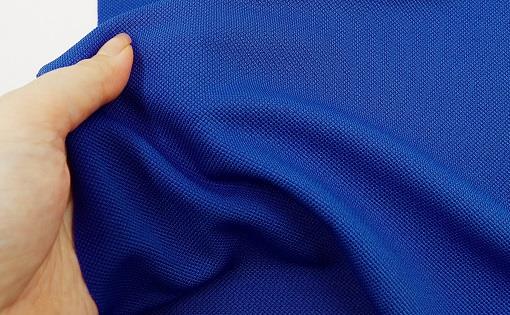
Key Takeaways
- Spandex’s legacy in fabric technology is marked by its extraordinary elasticity and durability.
- Its influence extends beyond clothing to healthcare, sports, and technology.
- Environmental and manufacturing challenges are being addressed through innovative approaches.
- Future developments promise to integrate spandex with intelligent technologies and sustainable practices.
In modern textiles, one material stands out for its game-changing properties—spandex. Spandex has transformed athletic wear and many clothing options by infusing fabrics with unparalleled stretch and recovery. With the industry ever-evolving, understanding the significance of spandex material is essential for appreciating the advances in fabric technologies. Known for its robust elasticity, spandex has paved the way for innovative design and comfort in everyday wear.
The Origins and Evolution of Spandex
The journey of spandex began in the early 1950s when the need for better elasticity in textiles was evident. Spandex was a revolutionary idea in its nascent stage—a polymer that could stretch up to five times its length without losing shape. As the material debuted in the market, designers and manufacturers quickly recognized its potential, ushering in a new era of fabric design that hinged on flexibility and comfort.
Over time, advancements in the production processes and chemicals for spandex material have lowered costs and enhanced environmental efficiency. Continued innovations ensure that today’s spandex remains a durable and versatile fabric choice across multiple applications. It embodies the ingenuity that the textile industry constantly strives for, making it a fabric that has made its mark and promises to keep evolving with time.
Characteristics and Properties of Spandex Material
Beyond its elasticity, spandex is known for its ability to return to its original form repeatedly. This property, referred to as “recovery,” has made it a favorite in figure-hugging fashion styles: it stretches where needed and recoils after use without sagging or bagging. This kind of performance has made it indispensable in producing high-quality, comfortable, and aesthetically pleasing garments.
Moreover, integrating spandex into textiles yields products that defy wear and tear, contributing to longer lifespans for the apparel. This is not just a win for consumers looking for long-lasting clothing options but also for the environment, as durable items may help reduce waste. Implementing spandex in fabrications promotes a more sustainable fashion future, urging manufacturers to consider the lifecycle of their products.
Researchers have conducted studies illuminating spandex’s environmental impact, allowing for an in-depth analysis of its sustainability and other characteristics. Access recent findings for comprehensive insights into the biodegradation of synthetic polymers, including spandex, providing essential data for both the industry and eco-conscious consumers.
Spandex in the Fashion Industry
Fashion has embraced spandex with open arms. Its applications range from sleek activewear that supports and moves with the body to form-fitting evening wear that combines elegance with ease. The rise of athleisure, a trend that merges athletic apparel with lifestyle fashion, owes much to the attributes of spandex. This blend of style and functionality has become increasingly prevalent in our social and work environments, demonstrating the material’s versatility and widespread appeal.
The significance of spandex in everyday clothing cannot be understated. Merging with traditional fabrics like cotton and polyester has created a new garment class that embodies the modern ethos of ‘live-in’ attire. These blends are soft to the touch, mold to the body’s contours, and retain their shape throughout the day. As a result, consumers now have a wealth of choices that cater to an active, demanding lifestyle—a testament to spandex’s pivotal role in the evolution of contemporary apparel.
Technological Breakthroughs with Spandex Fibers
Recent technological advancements have allowed spandex to be used in unimaginable ways. Researchers are developing spandex fibers with microelectronics, producing garments that track physiological data or react to external stimuli. These innovative fabrics are poised to revolutionize how we interact with our clothing, bridging the gap between textile and technology.
Exploring spandex within intelligent textiles has birthed fabrics that can cool the skin on a hot day, stiffen upon impact for protection, or even harvest energy from the body’s movements. Groundbreaking work in this field may soon bring about a new age where our clothes function as extensions of our tech, tailoring the user experience to the wearer’s exact needs.
Spearheading this exploration, studies address how spandex is integral to these tech-infused textiles. To explore these technological adoptions and their potential, the interested can delve into comprehensive research on advancing functionalized spandex materials.
Spandex, Comfort, and the User Experience
When consumers choose clothing, comfort remains a supreme consideration. Spandex becomes a protagonist here, ensuring that garments conform to the body without constraining it. It allows for clothing that accommodates a range of motions, from sitting for prolonged periods to engaging in high-intensity activities. This adaptability has fostered a growing preference for spandex-blended materials among consumers seeking function and form in their clothing.
Spandex is a popular business and leisure apparel choice since it may significantly increase wearer comfort. This shift towards stretchable, ‘body-friendly’ fabrics mirrors a broader cultural movement towards well-being and mindfulness, highlighting that how we feel in our clothes is just as important as how we look.
Challenges and Solutions in Spandex Manufacturing
For all its benefits, spandex production brings its own challenges, particularly environmental ones. The manufacturing of synthetic fibers generally requires significant energy and can lead to harmful byproducts if not appropriately managed. These realities have invited scrutiny from ecologists and sparked a movement towards more sustainable practices within the industry.
Consequently, breakthroughs in spandex manufacturing are increasingly geared towards ecological optimization. Innovative methods are being developed to recycle spandex, and researchers are exploring bio-based alternatives that could one day minimize the environmental footprint of spandex production. Such progress is critical to aligning the practical benefits of spandex with an environmentally responsible mandate.
Beyond Clothing: Spandex in Various Industries
Spandex’s influence stretches into sectors that may take time to be apparent. In the medical sphere, spandex is critical for creating compression stockings and bandages that aid circulation and recovery. Its consistent pressure and ease of movement make it indispensable in supportive medical garments and orthopedic devices. Similarly, diverse industries like automotive and aerospace utilize spandex for its ability to endure stress while offering the necessary flexibility, thereby ensuring safety and performance.
This cross-industry utility indicates spandex’s inherent adaptability and resilience. The textile’s enduring stretch and recovery capabilities offer a wealth of potential applications that extend far beyond the boundaries of traditional fabric use, underscoring just how essential spandex has become to industrial innovation and daily life.
Consumer Awareness and Education on Spandex
An informed consumer makes for a robust market—particularly in the textile industry. As consumers become more aware of the fabrics that make up their clothing, there’s a growing demand for transparency around using spandex and other synthetic materials. This demand pushes manufacturers to label products accurately, ensuring spandex’s role within a garment is communicated.
With heightened consumer knowledge, there’s a newfound emphasis on responsible purchasing decisions. Shoppers are considering not only comfort and style but also the lifecycle of their clothing and the environmental ramifications of their purchases. As a result, education on spandex and other textile components becomes crucial, driving a more informed and environmentally conscious marketplace.
The Role of Spandex in Future Fabric Developments
The future landscape of textiles seems intertwined with the evolution of spandex. Continual research into spandex blends showcases the material’s potential to be combined with new, biodegradable fibers, potentially revolutionizing sustainability in manufacturing. With these developments on the horizon, the possibilities for spandex-enhanced materials extend beyond the current uses, pointing to a future where spandex plays a crucial role in textile innovation and functionality.
As the textile industry moves forward, the transformative power of spandex cannot be underestimated. Its integration into future fabrics will likely emulate advancements, from wearable technology to conscious clothing designs committed to planetary stewardship and resource conservation.
Conclusion: Spandex as a Catalyst for Innovative Textiles
Spandex’s role in the story of fabric technology is as foundational as forward-looking. Spandex has become an irreplaceable component of modern apparel and various industrial applications by enabling versatility and ensuring enduring appeal in textiles. As the industry surges towards a future where ingenuity and sustainability go hand in hand, spandex stands ready to stretch the notions of what materials can achieve. The evolution of this resilient fiber continues to unfold, promising a landscape rich with innovation, informed consumers, and mindful practices that honor both human needs and the earth we inhabit.





